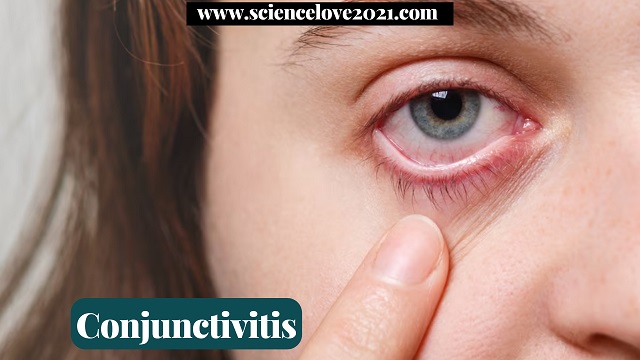Conjunctivitis, also known as "pink eye," is a common eye disease that affects people of all ages. It is characterized by inflammation of the conjunctiva. It is a thin, clear tissue that covers the white part of the eye and the inner surface of the eyelids. Conjunctivitis can be caused by a variety of factors, and its symptoms can range from mild discomfort to severe irritation.
In this article, we will delve into the causes, symptoms, treatment options, and prevention measures for conjunctivitis.
Types of Conjunctivitis
Conjunctivitis can be classified into several types depending on its origin and characteristics. Understanding these different types can aid in proper diagnosis and treatment. The most common types of conjunctivitis include:
Viral Conjunctivitis
1. This infection is caused by a viral infection, most often associated with the common cold or other respiratory infections.
2. It is highly contagious and can be spread by direct contact with infected eye secretions.
3. Symptoms include redness, watery discharge, and itching in one or both eyes.
Bacterial Conjunctivitis
1. It is caused by bacteria such as Staphylococcus aureus or Streptococcus pneumoniae.
2. It is usually spread through contact with contaminated hands or objects.
3. Symptoms include redness, a thick yellow or green discharge, and crusting of the eyelid.
Allergic Conjunctivitis
1. This infection is mainly caused by allergens such as pollen, pet dander, or dust mites.
2. It is not contagious and often affects both eyes at the same time. Symptoms include redness, intense itching, and watery discharge.
Chemical Conjunctivitis
1. This infection is mainly caused by exposure to irritants such as chlorine, smoke, or certain chemicals.
2. It is not contagious and usually only affects one eye. Symptoms include severe redness, tearing, and a burning sensation.
Read more - Glaucoma
Common Symptoms of Conjunctivitis
It is important to recognize the symptoms of conjunctivitis early and get prompt treatment. Typical symptoms of conjunctivitis are as follows:
- Redness in one or both eyes
- Watery or thick, colored discharge from the eye
- Itching or a gritty feeling in the eyes
- Sensitivity to light
- Crusty eyelids, especially upon waking
- Swollen conjunctiva
- Blurred vision
Read more - Dementia
Causes of Conjunctivitis
Understanding the underlying causes of conjunctivitis can aid in its prevention and management. The main reasons behind this situation are as follows:
Viral Infections
- Adenoviruses are the primary cause of viral conjunctivitis. It is highly contagious and is often spread by coughing, sneezing, or touching infected surfaces.
Read more - Bacteria
Bacterial Infections
1. Bacterial conjunctivitis is usually caused by Staphylococcus aureus, Streptococcus pneumoniae, or Haemophilus influenzae.
2. It is mainly spread by coming in contact with an infected person or by direct contact with a contaminated object.
Allergens
1. Allergic conjunctivitis is triggered by allergens such as pollen, pet dander, mold spores, or dust mites.
2. When we come in contact with these allergens, our immune system releases histamine, which causes inflammation.
Irritants
1. Chemical conjunctivitis is mainly caused by exposure to irritants such as smoke, pollution, and chlorine found in swimming pools.
2. Contact lenses or eye drops containing preservatives can also cause irritation.
Read more - Conjunctivitis in Dogs
Treatment of Conjunctivitis
The treatment of conjunctivitis depends on its type and severity. Some cases of this get cured on their own which does not require any medical intervention but in many cases, it becomes necessary to see a doctor. Here are some common treatment options:
Home Care
➠ For viral and mild cases of bacterial conjunctivitis, home care can be effective.
➠ Apply a warm compress to soothe the eyes and gently remove the crusts.
➠ Avoid touching or rubbing the eyes to avoid further irritation.
➠ Apply a warm compress to soothe the eyes and gently remove the crusts.
➠ Avoid touching or rubbing the eyes to avoid further irritation.
Prescription Medications
➠ For bacterial conjunctivitis, doctors mainly prescribe antibiotic eye drops or ointment.
➠ Anti-inflammatory eye drops or oral antihistamines can be used to reduce the symptoms of allergic conjunctivitis, such as inflammation.
Artificial Tears
- Lubricating eye drops can provide relief from dryness and irritation associated with all types of conjunctivitis.
Antiviral Medications
- Cases of viral conjunctivitis are serious cases. In such severe cases, antiviral drugs may be prescribed.
Professional Medical Care
- If symptoms worsen or you experience vision changes, seek immediate medical attention.
Read Also - Mental health and well being
Preventive Measures
Taking preventive measures can help reduce the risk of conjunctivitis and its spread. To do this, follow these guidelines:
1. Hand hygiene - Wash your hands frequently with soap and water, especially after touching your eyes or face.
2. Avoid touching eyes - Avoid touching or rubbing your eyes frequently, as this can cause germs and irritation.
3. Personal Items - Avoid sharing personal items like towels, washcloths, and eye makeup.
4. Allergen control - Keep windows closed during high pollen seasons, use an air purifier, and wash bedding regularly.
5. Contact Lens Hygiene - Follow proper contact lens care and hygiene practices to prevent eye infections.
6. Stay Home When Infected - If you have conjunctivitis, avoid close contact with others and stay home until the symptoms subside.
Conjunctivitis is a common eye condition that can affect anyone, but with a better understanding of its causes, symptoms, and treatment, you can effectively manage and even prevent its occurrence. Remember to seek professional medical advice if you experience persistent or severe symptoms to ensure timely and appropriate treatment.



.webp)
No comments:
Post a Comment